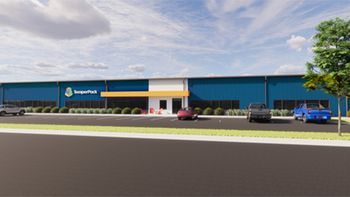
- Pharmaceutical Commerce - May/June 2016
IMS 2015 Use of Medicines report: US sales reach $424.8 billion
Double-digit growth (12.2%) for the second year running
The annual Use of Medicines report, from the IMS Institute for Healthcare Informatics, comes at a time when drug pricing and revenue growth has been under intensive stress. Perhaps in part for this reason, the Institute is much more careful about distinguishing between ex-manufacturer invoice pricing (which is essentially the price that wholesalers charge their customers) and what it calls “net-price spending,” which accounts for the tens of billions of dollars that pharma companies forgo through rebates, discounts and other off-invoice concessions. Using invoice sales is a good way to track revenue trends from year to year (since discounting occurs at many times and in many different ways), but net-pricing reflects the revenue that manufacturers ultimately receive.
So, the invoice sales of $424.8 billion recorded for 2015 translates, by IMS estimates, into $309.5 billion, and the year-over-year growth rate was 8.5%.
Sales by channel (Fig. 1) shows a reversal of a usual pattern: chain drug sales rose more slowly than independent pharmacies. And, even though mail order processed fewer prescriptions in 2015, it recorded the highest growth of any of the retail channels, reflecting the concentration in specialty pharmaceutical dispensing.
Specialty products represented $150.4 billion of the 2015 invoice sales, up 21.6% over the previous year. New oncology products drove a good part of this growth; oncolytics alone represent invoice sales of $39.1 billion, up 18.1%. The new hepatitis C therapies—which seemed to kick off the current focus on drug pricing when Gilead Sciences generated over $10 billion in sales in its first full year on the market (2014), were used on nearly 250,000 patients in 2015; the Institute notes that new patient starts for hep C treatments is moderating.
Total prescription volume reached 4.368 billion (Fig. 2), an increase of 1.0% over the previous year. A distinct downturn in mail-order prescription fulfillment was found, which the Institute attributes to more off-patent medicines being filled at local pharmacies rather than through the mail. (Another factor here could be the shared dispensing now occurring between CVS Health’s Caremark PBM, which primarily employs mail order, and the CVS community pharmacy network; similar arrangements are occurring with other PBMs and pharmacies.)
The Institute forecasts that revenue growth will reach $610-640 billion by 2020 (invoice basis). The Institute expects that approvals of New Active Substances by FDA to continue at a pace of 43–49 per year, which is roughly double the rate that was seen in the early 2010s.
Drug pricing is unquestionably one of the hot buttons of the current political season; it should give pause to the pharma industry that most of the leading candidates have brought up re-importation (drugs purchased outside the US, but often originally manufactured and shipped from the US) and Medicare price negotiating as measures to control drug costs. A study from the Office of the Assistant Secretary for Planning and Evaluation (ASPE) in March calculated a “spending figure” of $457 billion for a combination of “retail” and “non-retail” drugs (the latter mostly being drugs purchased under a medical benefit and not via a prescription). Michael Kleinrock, research director at the IMS Institute, notes that the ASPE figures include hardly any of the rebates and other discounts that manufacturers provide to buyers; “it’s essentially what’s paid at the end of the supply chain, and not what manufacturers receive,” he says.
IMS Institute is steadily refining its analysis of drug discounting, but Kleinrock notes that “drug pricing is not transparent” either to buyers, government or, ultimately, patients themselves. That transparency issue could be the starting point for the discussions when a new President is
in office.
The full report is available from
Articles in this issue
over 9 years ago
FDA looks to industry for help in DSCSA complianceover 9 years ago
Clinical cold chain vendors go into a deep freezeover 9 years ago
Oncology: a new era in therapies; same cost concernsover 9 years ago
Brand enhancement and safety with unit-dose packagingover 9 years ago
Managing supply chains from the cloudover 9 years ago
Changing the payment paradigmover 9 years ago
Specialty pharmacy dynamicsNewsletter
Stay ahead in the life sciences industry with Pharmaceutical Commerce, the latest news, trends, and strategies in drug distribution, commercialization, and market access.




